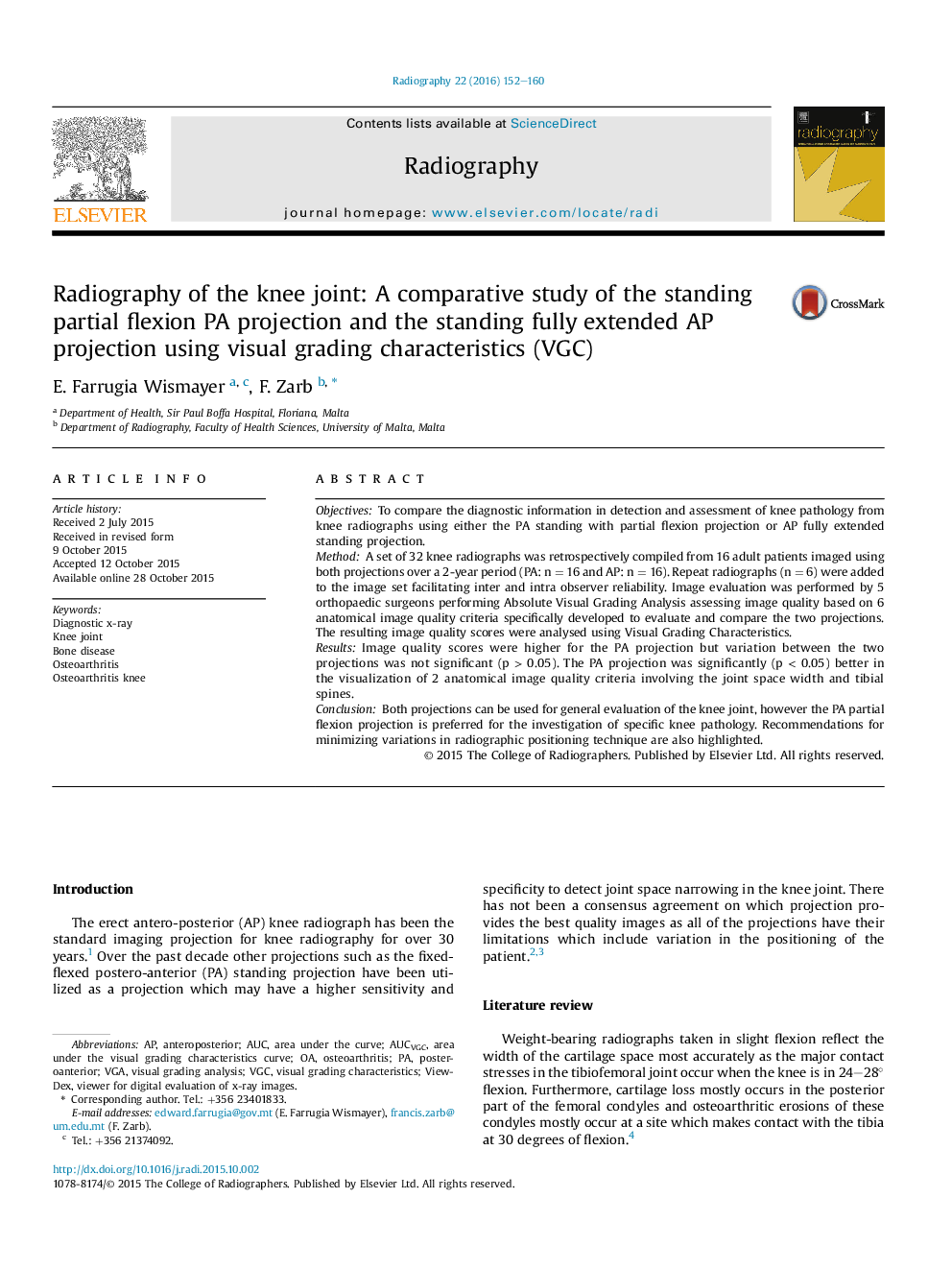| Article ID | Journal | Published Year | Pages | File Type |
|---|---|---|---|---|
| 2734681 | Radiography | 2016 | 9 Pages |
•AP/PA radiographic knee projections are comparable for most clinical indications.•PA knee projection is better in visualizing joint space/tibial spines.•PA projection is more standardized if used with a positioning frame.•Use of anatomical criteria facilitates evaluation of quality of knee radiographs.
ObjectivesTo compare the diagnostic information in detection and assessment of knee pathology from knee radiographs using either the PA standing with partial flexion projection or AP fully extended standing projection.MethodA set of 32 knee radiographs was retrospectively compiled from 16 adult patients imaged using both projections over a 2-year period (PA: n = 16 and AP: n = 16). Repeat radiographs (n = 6) were added to the image set facilitating inter and intra observer reliability. Image evaluation was performed by 5 orthopaedic surgeons performing Absolute Visual Grading Analysis assessing image quality based on 6 anatomical image quality criteria specifically developed to evaluate and compare the two projections. The resulting image quality scores were analysed using Visual Grading Characteristics.ResultsImage quality scores were higher for the PA projection but variation between the two projections was not significant (p > 0.05). The PA projection was significantly (p < 0.05) better in the visualization of 2 anatomical image quality criteria involving the joint space width and tibial spines.ConclusionBoth projections can be used for general evaluation of the knee joint, however the PA partial flexion projection is preferred for the investigation of specific knee pathology. Recommendations for minimizing variations in radiographic positioning technique are also highlighted.
Graphical abstractFigure optionsDownload full-size imageDownload high-quality image (115 K)Download as PowerPoint slide
